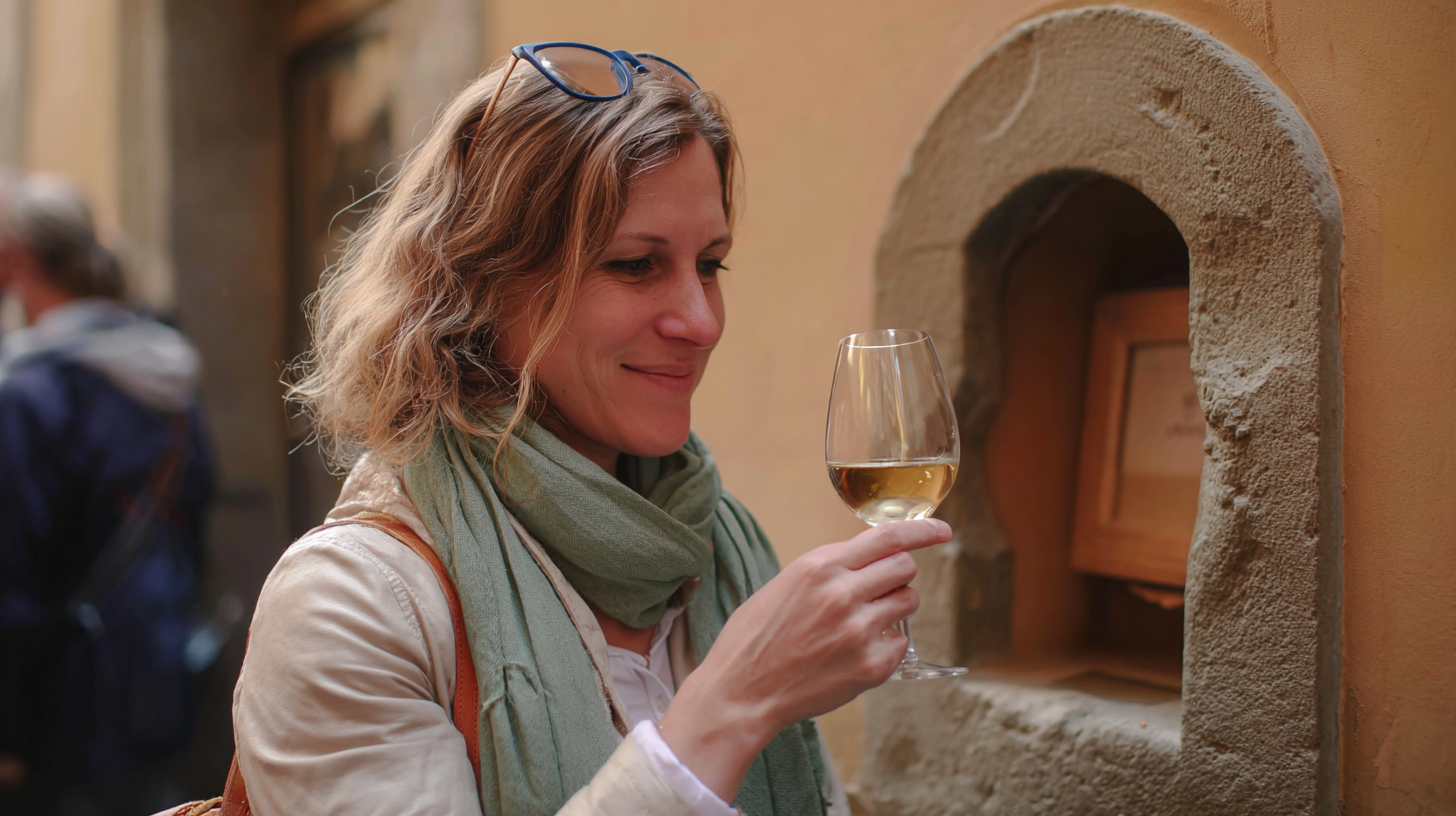Tiny Doors, Big Stories: Florence’s Wine Windows and the Art of Civilized Thirst
If you’ve ever wandered Florence with that particular afternoon hunger—half curiosity, half mischief—you may have noticed pocket-sized doors set low in Renaissance palazzi. They’re not for cats. They’re for Chianti. These are the buchette del vino, “wine windows”: discreet apertures where, for centuries, Florentines bought wine directly from noble families who cultivated vineyards just beyond the city walls. Think of them as the original curbside pickup—only with better architecture and fewer cardboard boxes.
A Civic Invention with Style
In late-Renaissance Florence, the urban elite had both vineyards and palazzi, and the buchetta was the elegant hinge between the two. A small bell, a quiet exchange, coins and bottle passing through a stone frame worn smooth by repetition. No guild counters, no market theatrics—just the pure, friction-minimal ritual of everyday luxury. The format was so right-sized to the city’s temperament that it survived plagues, fashions, and the occasional tourist boom.
Hygiene Before It Was Hashtagged
During outbreaks and anxious seasons, the wine window proved an unexpectedly modern device. Contact-light commerce, fresh air, and a social compact honored at arm’s length: you knock, they pour, the city keeps moving. Today we call it “design thinking”; Florentines simply called it good sense.
What Makes a Buchetta a Buchetta
Scale. They’re small—human, but with a flourish.
Stonework. Pietra serena frames, little arches, miniature cornices that echo the façade’s grand lines.
Placement. Street-level, slightly to the side, poised between public and private.
Patina. The beauty of use: nicks, soft edges, a secret shine where a thousand hands have met the same curve.
The Quiet Pleasure of Noticing
Florence trains the eye to read nuance: a dentil here, a rusticated block there, a door handle with opinions. Spotting a wine window is a minor sport—like birdwatching, but for architecture. Once you tune in, they reveal themselves all over: in busy streets, in hushed lanes, in neighborhoods where laundry lines map the sky like musical staves.
How to Meet One (Gracefully)
Look low. They’re at about knee to hip height, often with a tiny shelf or lip.
Don’t pry. Many are sealed; they’re historic elements, not props.
Read the façade. A buchetta is a visual footnote—follow it back to the palazzo and you’ll often sense the story (and status) it served.
If you find one in use, consider it your invitation to slow down. Order something local, stand by the stone, and let the city edit your pace.
Why They Endure
Because Florence is excellent at continuity. The city has a way of carrying good ideas forward—craft, proportion, modesty, a certain refusal to scream. The wine window is all of that: useful, beautiful, private, and public at once. A design solution that never needed rebranding.
A Florentine Souvenir (That Isn’t a Souvenir)
You can’t take a buchetta home, but you can adopt its philosophy: quality at street level. At Florence Factory we champion the same idea—objects made with local intelligence, hands that know, materials that remember. The scale is human. The ritual is daily. The pleasure is durable.
Practical Mini-Guide
Prime time: Late afternoon into early evening, when the light turns the stone honey-colored and the city exhales.
What to try: A local red, a white from the hills, or a seasonal pour. Stand, sip, observe. You’re part of the street’s choreography now.
Etiquette: Order simply, say grazie, linger politely. The window is a threshold, not a stage.
Map & Self-Guided Walk: Every Buchetta, Mapped here
For the cartographically inclined (and the merely curious), the City of Florence maintains an open-data map that geolocates the buchette del vino across the historic center and beyond. It’s a graceful way to turn a stroll into a treasure hunt: tap the map, trace a route, and let the stonework do the storytelling. Credit where it’s due: the dataset is published under a CC-BY 4.0 license by the Municipality, and notes roughly 180 windows within city limits, plus many more across the metro area. Perfect for designing your own “wine-window walk,” one tiny door at a time.
Florence Factory’s Take
We love the wine windows because they mirror our ethos: small openings onto larger worlds. If you’re mapping your own “buchetta walk,” begin with an eye for details, end with something made in Tuscany—preferably designed to be used, not displayed. And if you need a companion piece for your memory, drop by: we curate craft the way the city frames stone—precisely, and with affection.

